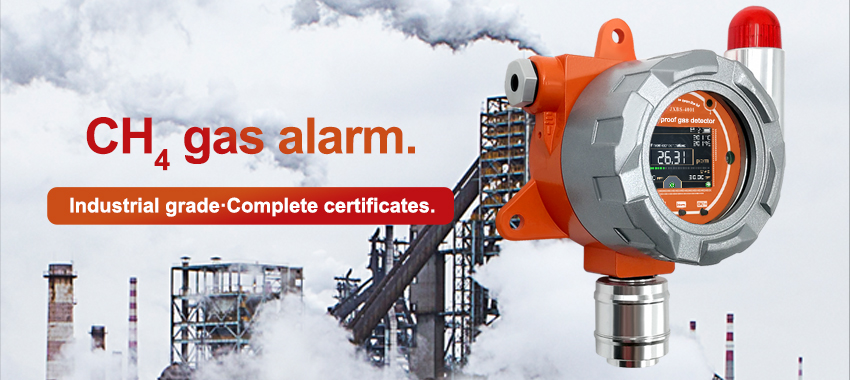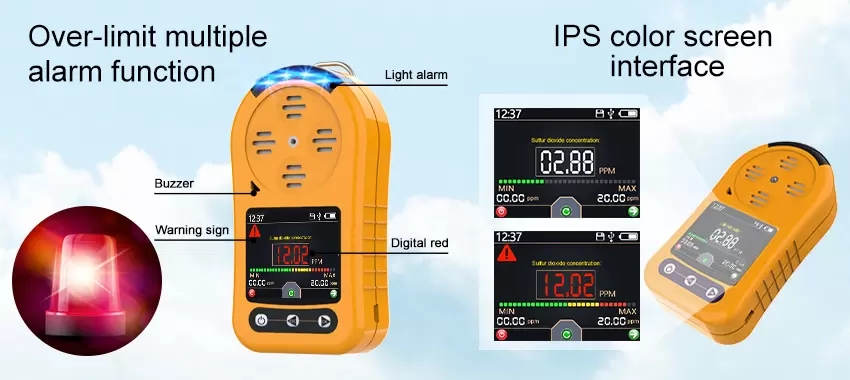Background:
Gas stations store and sell a large amount of gasoline and diesel during their operations. Compared with diesel, gasoline has strong volatility. It is easy to mix with air to produce flammable and toxic gases such as CO, NO2, SO2, etc. Therefore, gas stations often install gas detectors to poison the environment. The combustible gas is monitored.

Introduction of gas detector
At present, the common combustible gas transmitter on the market mainly include electrochemical, catalytic combustion, thermal conductivity, infrared absorption, and semiconductor types in terms of monitoring principles. Among them, the most widely used one is the electrochemical type. And catalytic combustion type gas transmitter.
The JXCT explosion-proof gas detector adopts imported first-line brand sensors. It uses electrochemical and infrared absorption to monitor hydrogen (H2), hydrogen sulfide (H2S), phosphine (PH3), carbon monoxide (CO2), etc. Combustible, explosive, and toxic gases, through Renke’s unique compensation algorithm and multi-stage standard gas calibration, make them have the characteristics of rapid and sensitive response, high measurement accuracy, strong anti-interference ability, and stable performance.
The role of gas detector
The explosion-proof gas detector adopts a shell that has sufficient mechanical strength and can withstand internal explosion pressure. This kind of shell has a strong explosion-proof performance. Even if an explosion occurs inside the device, the shell will not be deformed and prevent it at the same time. The internal explosion extends to the outside of the shell, and its explosion-proof mark is Ex d IIC T6 Gb. If it is equipped with a sound and light alarm, when the concentration of combustible gas exceeds the standard, the transmitter will send out a high-decibel sound and light alarm signal to remind the staff. , To prevent the occurrence of safety accidents such as explosions.
The explosion-proof gas sensor adopts the standard Modbus-RTU communication protocol, which can monitor the concentration of various toxic and combustible gases in the gas station environment in real-time, and output the data to the environmental monitoring host through the 485 lines, and then the host computer is connected through the 485 cables or ether Internet, GPRS/4G, etc. upload the data collected by the monitoring terminal to the environmental monitoring cloud platform to realize the functions of data collection, data display, and abnormal alarm.

Gas station gas monitoring equipment
To ensure the accuracy of the monitoring results, the requirements for the gas sensor installed in the gas station are very strict. Firstly, choose the vicinity of the fueling machine with higher gas concentration, and then determine the height of the installation position according to the specific gravity and wind direction of the gas: For example, gas with a density greater than air diffuses faster, such as a CO2 gas sensor, which must be installed on a wall greater than 30 cm from the ground; gas with a density less than air diffuses upwards faster, such as H2 gas sensor should be installed below 30 cm from the top of the house.
The combustible gas produced by gasoline volatilization is easy to mix with air. If the concentration reaches the explosive limit, it will explode when encountering Mars, which will endanger the personal safety and property safety of people around. Therefore, smoking and the use of open flames are prohibited at gas stations.
To enhance the monitoring effect, an explosion-proof gas detector can be installed at a higher density. Once the concentration of certain gas leaks exceeds the limit, the system will immediately notify the management personnel of abnormal information by telephone, SMS, etc., so that timely measures can be taken to better prevent the toxic gas from exceeding the standard, combustible gas explosion, etc. The accident happened.
 : +86 155 8830 2704
: +86 155 8830 2704 : jxdziot@gmail.com
: jxdziot@gmail.com
